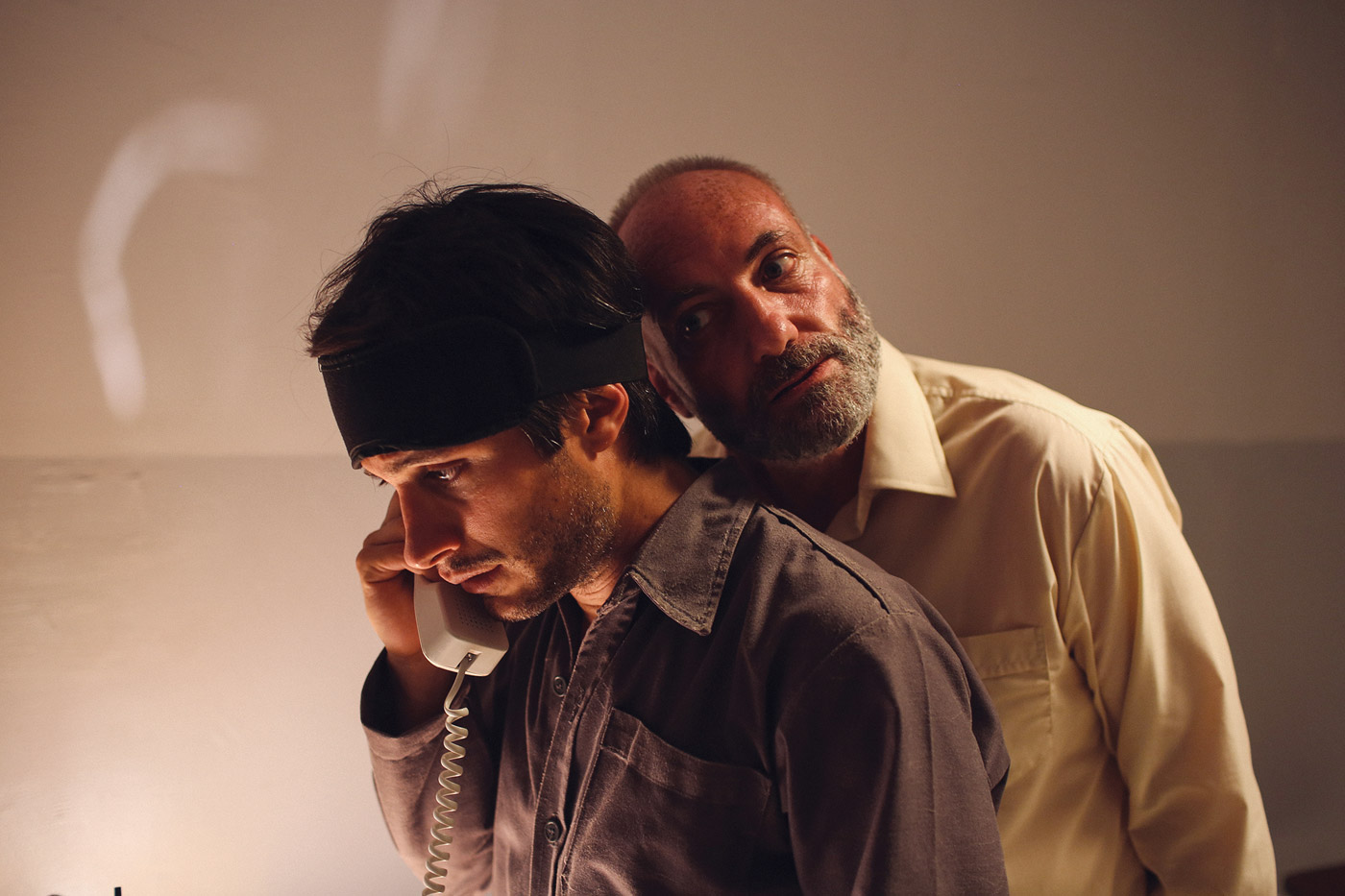Bobby Bukowski undergoes the third degree to recreate the harrowing prison drama Rosewater, based on the true-life memoir Then They Came For Me
Even by the challenging standards nonfiction-inspired filmmaking often presents with locations, budget, gear and crew, Rosewater, the feature film debut from political satirist and Emmy-winning TV talk show host Jon Stewart, is off the grid. Shot in Amman, Jordan last summer, when daily temperatures exceeded 100 degrees and local Islamic crewmembers were fasting for the holiday of Ramadan, this tough indie drama put its creators through nearly as many hoops as its real-life protagonist faced.
First, some background: In 2009, Iranian/Canadian journalist Maziar Bahari (played in the film by Gael García Bernal) returned to Tehran to interview Mir-Hossein Moussavi, the prime challenger to incumbent Mahmoud Ahmadinejad on the eve of the country’s presidential election. When only two-thirds of the votes were counted, Ahmadinejad was declared the winner, resulting in spontaneous protests by Moussavi’s supporters that Bahari captured (at great personal risk) with a Sony PD-100.
After the election, Iran’s Revolutionary Guard arrested Bahari; he was blindfolded, tortured and interrogated for four months by a nameless man who smelled of rosewater. Here’s where it gets really strange: Part of “Rosewater’s” case against Bahari came from a satirical interview the journalist did with The Daily Show’s Jason Jones in a Tehran café, where Jones, in keffiyeh and dark sunglasses, calls the Newsweek reporter a spy.
The riveting memoir Bahari wrote about his ordeal, Then They Came For Me: A Family’s Story of Love, Captivity, and Survival, revealed the precarious line all journalists walk in an authoritarian society. Bahari appeared on The Daily Show a few months after his release in 2009, and again in 2011, when his book came out, and he and Stewart formed a friendship that led to the unusual collaboration that became Rosewater.
“In trying to turn Maziar’s story into a [feature] film,” Stewart observes, “we wanted to stay current with political events, and realized it was going to take too much time [to wait for A-list writers and directors]. We also knew making a film this way [with Stewart writing/directing on an indie budget] required an experienced team with a solid foundation. Which is why [producers] Scott [Rudin], Lila [Yacoub] and Will [Weiske] connected me with Bobby [Bukowski].”
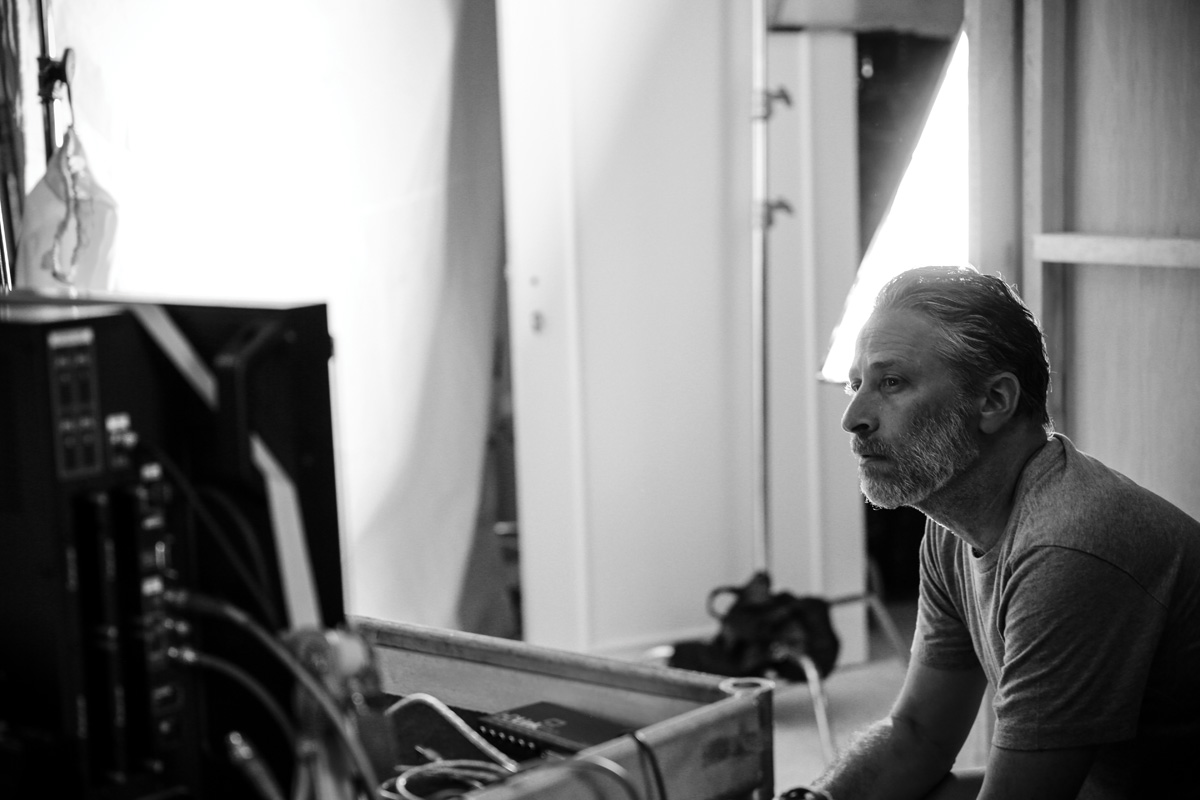 A seasoned Guild indie, who had four features debut at this year’s Toronto International Film Festival including Rosewater, Bukowski recalls his initial meeting with Stewart as being characteristically droll and direct. “Jon said: ‘Do you want to make a movie with a first-time director, in Jordan, in the middle of the summer during Ramadan?’” he laughs, “And I said: ‘that sounds great.’”
A seasoned Guild indie, who had four features debut at this year’s Toronto International Film Festival including Rosewater, Bukowski recalls his initial meeting with Stewart as being characteristically droll and direct. “Jon said: ‘Do you want to make a movie with a first-time director, in Jordan, in the middle of the summer during Ramadan?’” he laughs, “And I said: ‘that sounds great.’”
“Obviously I knew this project would have many challenges,” Bukowski continues. “But what was most appealing to me, as a cinematographer, was that more than half the film takes place in an interrogation room and prison cell – not, inherently, the most visual places to tell a story. I had to go right to the center of intention of each scene and make critical choices about designing the visuals – handheld versus dolly, wide versus longer lenses, dark versus bright with high contrast – to help create a visual arc that would mirror the narrative. That was really exciting to pull off.”
Weiske, who had plenty of his own challenges as UPM including a ban on his crew drinking water in public during Ramadan [he set up blackout tents], says more than 30 percent of the five-week schedule was spent in the prison cell/interrogation rooms.
“We knew we wanted to build side-by-side sets, but there are no soundstages in Jordan,” Weiske observes. “So we found a gymnasium, which, of course, had no soundproofing or perms [catwalks] for hanging lights.
“We originally planned to build both sets with breakaway walls, so Bobby could vary his lighting,” he adds. “But that proved too time consuming. There were so many limitations that Bobby and Gerry [production designer Gerald Sullivan] had to go around.” Bukowski says his best option was to light from the set’s only window – either through 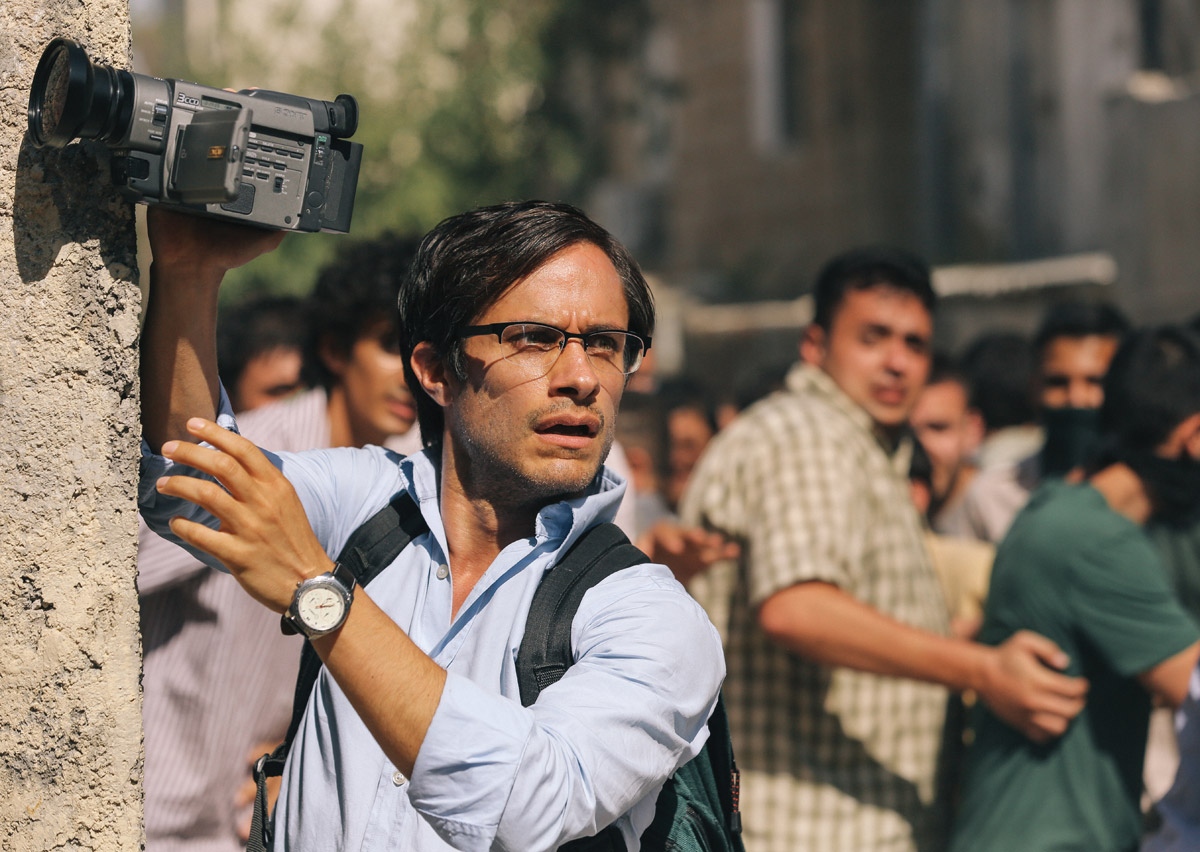 diffusion or bounced off cards to vary time of day – which was up very high. “I remember being on a technical scout and asking if I could get the window light up on a lift,” the DP recalls, “and they said, ‘Oh, we can build scaffolding that can be moved.’ So the first day I arrive they had put a very small 1K Tungsten Par on the scaffold. I asked to have it moved five feet to the left. And they said, ‘Okay, but we’ll need to take it off and reassemble the scaffold.’ I said, ‘Can’t you just wheel it over five feet? And they said, ‘The scaffold has four legs and we only have three wheels!’”
diffusion or bounced off cards to vary time of day – which was up very high. “I remember being on a technical scout and asking if I could get the window light up on a lift,” the DP recalls, “and they said, ‘Oh, we can build scaffolding that can be moved.’ So the first day I arrive they had put a very small 1K Tungsten Par on the scaffold. I asked to have it moved five feet to the left. And they said, ‘Okay, but we’ll need to take it off and reassemble the scaffold.’ I said, ‘Can’t you just wheel it over five feet? And they said, ‘The scaffold has four legs and we only have three wheels!’”
When the prison scenes shifted to night, Bukowski sourced his lighting from fluorescents that the production designer had built to his specifications into the jail cell and adjacent hallway sets. “Sometimes I would turn the fluorescent light off that was in the cell and use spillover from fluorescents in the adjacent hallway,” he adds. “It was all motivated by where Gael’s character was in the story, moving from darkness to light.”
Stewart describes how his preproduction talks with Bukowski aimed for a quiet inauthenticity. “What is so important to me [in nonfiction-based stories] is to lessen the distance between the audience and subject,” he says. “Seeing something that is overtly vérité can draw attention to the filmmaking and take you out of the story. I wanted a realism and urgency that wasn’t in your face, as well as a subtle beauty that [Bukowski and Sullivan] could create, given all of their skill and experience.”
Such moments clearly peak during the long and intricate psychological interplay Bernal’s character undergoes with “Rosewater” (played by Kim Bodnia). Bukowski used the ALEXA on an Easyrig, and as Stewart describes, established a rapport and choreography with the actors that helped to lessen the number of takes needed in the interrogation scenes. “Usually we got it on take three,” Stewart recalls.
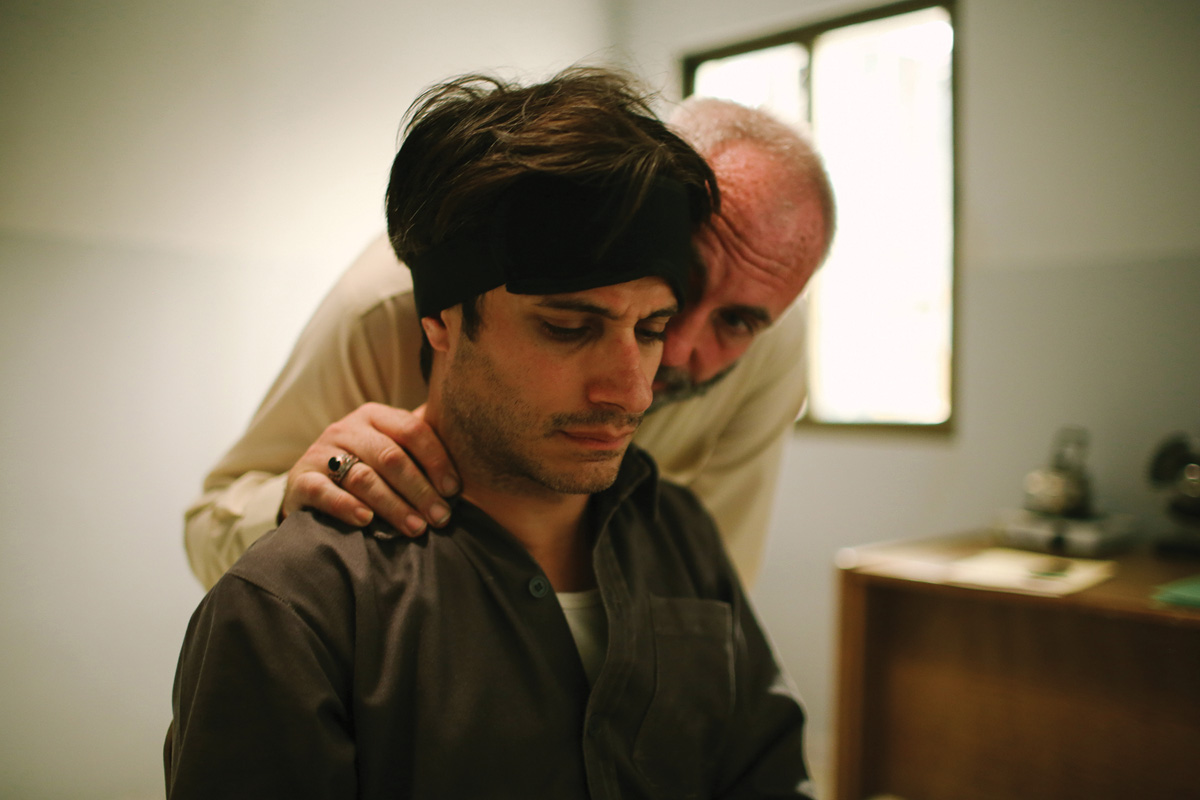 In fact, the prison cell set was so tight, assistant cameraman Michael Burke often had to pull remote focus from a ladder above. “Being in that small of a space with the actor creates an unspoken choreography where you anticipate each other’s moves,” Bukowski shares. “My approach to cinematography is that the actors always come first. So in lighting these sets with practical lights, there were spots where [the actors] would go into complete darkness or overexposure. There were no marks on the ground for focus or the chance to carefully modulate any exposure changes. Lighting for a space is a given in documentary filmmaking, and that is definitely the example we followed here.”
In fact, the prison cell set was so tight, assistant cameraman Michael Burke often had to pull remote focus from a ladder above. “Being in that small of a space with the actor creates an unspoken choreography where you anticipate each other’s moves,” Bukowski shares. “My approach to cinematography is that the actors always come first. So in lighting these sets with practical lights, there were spots where [the actors] would go into complete darkness or overexposure. There were no marks on the ground for focus or the chance to carefully modulate any exposure changes. Lighting for a space is a given in documentary filmmaking, and that is definitely the example we followed here.”
In direct counterpoint to the claustrophobic prison scenes is Rosewater’s recreation of a large (initially) peaceful protest march that erupted after the election. As noted, Bahari shot the real event in Tehran. He used a prosumer camera, looking down from a highway overpass on the gathering masses. “Jon, Bobby and Gerry took a lot of time to find exteriors in Amman that worked for Tehran,” Weiske explains. “And the location we ultimately found was a bridge overlooking a busy road that was the main thoroughfare between downtown Amman and the rest of the city. It took a long time for our local production manager [Fuad Khalil] to coordinate with the police because it was a very big deal to close it down.”
Other challenges to duplicate the march abounded. The shoot fell right after the end of Ramadan – an inexact day determined by religious clerics in Saudi Arabia. It’s also a festive time when many Amman residents are with their families.
“We hired a local casting person,” Weiske continues. “But she had a very small pool from which to draw. Jon and Stephen Colbert had used Facebook to attract more than 200,000 people [to their “Rally To Restore Sanity And/Or Fear” on the National Mall in Washington D.C. in 2010], so we did a little video for a Facebook campaign, and we got hundreds of locals to come out. But it was still really challenging, especially for Bobby given the small window of sunlight [three hours] before shadows covered everything.”
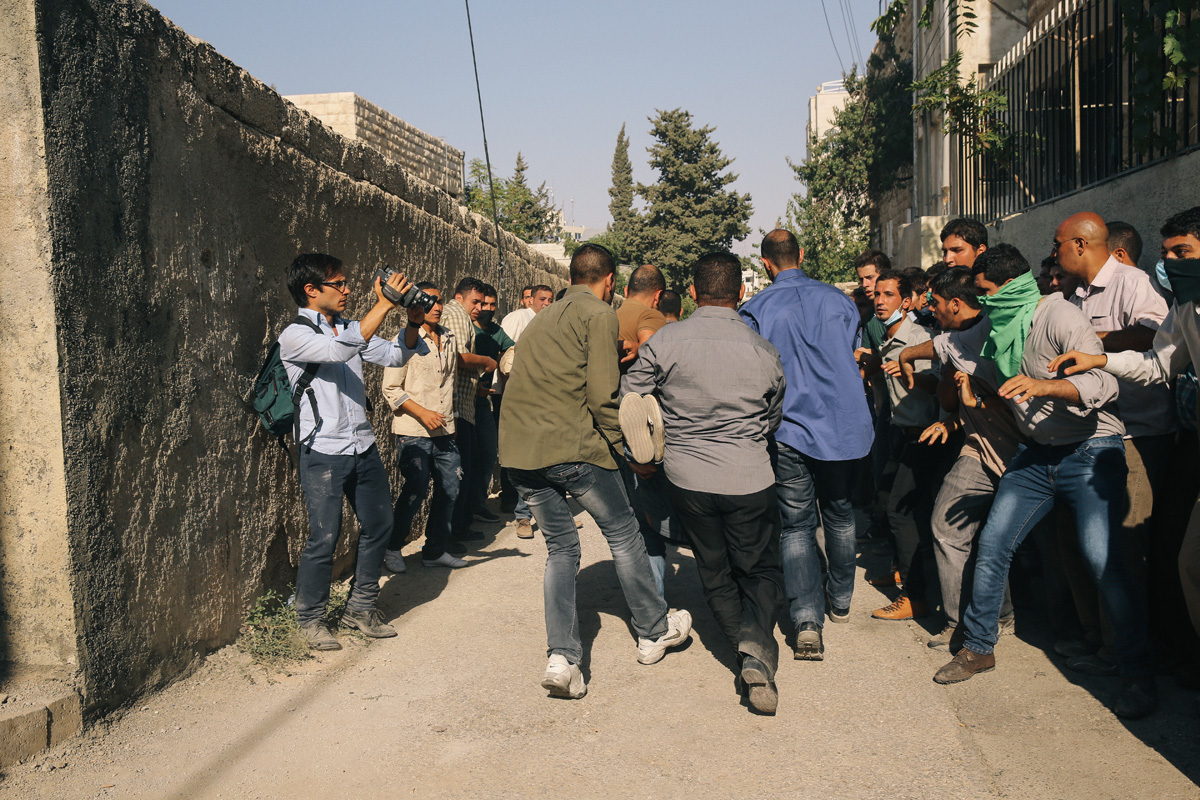 In fact, Bukowski, who at one point was dressed as an extra and placed in the middle of the crowd, was under no illusions about how the march would be shot. “The major directive was to get the scene in the can without anybody getting hurt,” he laughs. “That meant using me and two other operators with cameras in our hands, and no big HMIs on cranes or lifts – just a few bounce cards and the sun.”
In fact, Bukowski, who at one point was dressed as an extra and placed in the middle of the crowd, was under no illusions about how the march would be shot. “The major directive was to get the scene in the can without anybody getting hurt,” he laughs. “That meant using me and two other operators with cameras in our hands, and no big HMIs on cranes or lifts – just a few bounce cards and the sun.”
Stewart wanted some of the large banners of Iran’s Supreme Leader Ayatollah Ali Khamenei that dominated Iran’s 2009 election race to be visible on a building directly behind the highway’s exit ramp. That meant erecting a 20 x 40 foot green screen and separating the local extras from the wall, which Bukowski says was “not anything like” the documentary techniques otherwise used throughout the film.
“Because I knew we would be integrating Maziar’s PD-100 footage from the real demonstration,” he adds, “I tried to ‘dirty up’ the Alexa a little bit with filters. I also used Panavision’s classic line of uncoated lenses that are more susceptible to flaring. When I’m trying to match, change, or otherwise degrade a look, it’s always about the glass in front of the lens and trying to take away that hyper-sharp modern look.”
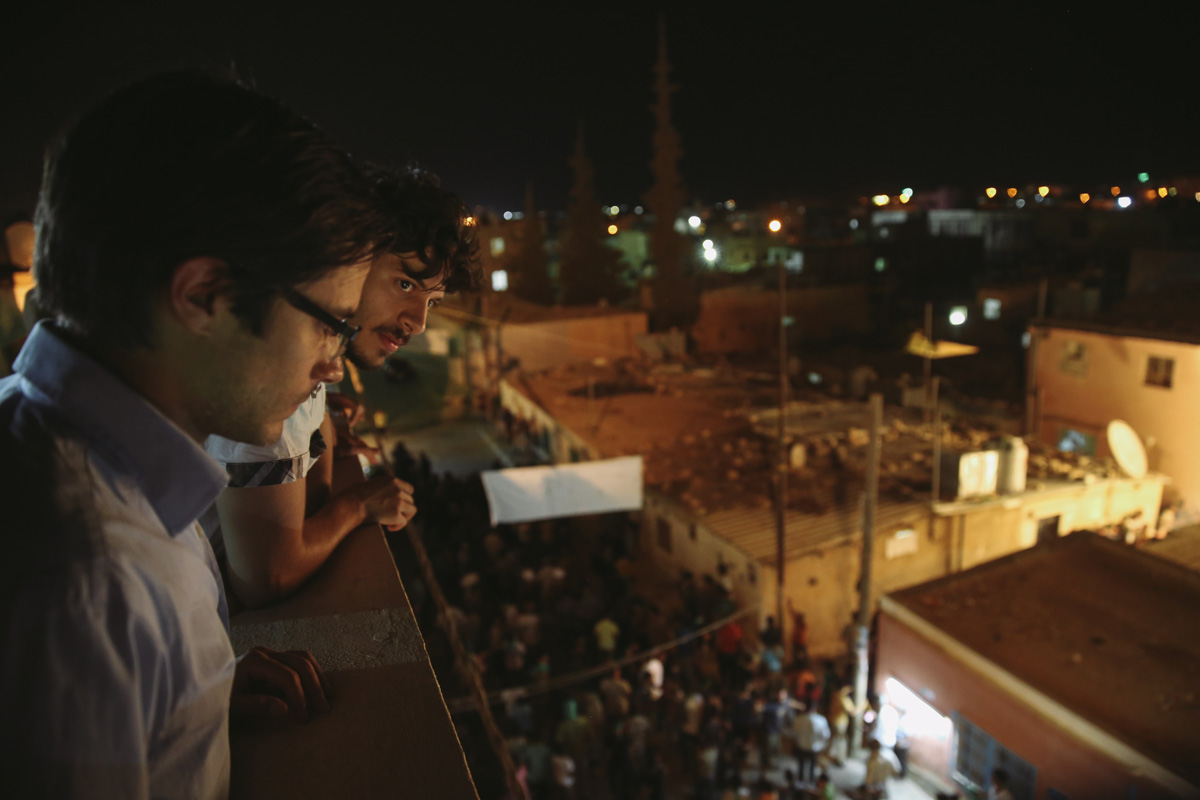 Another kind of hyperrealism seen throughout Rosewater is election-era footage, shot in Tehran and used as a pinwheel from which the visual aesthetic spirals around. “In the world we live in today,” Stewart describes, “people are accustomed to seeing a mash-up of all kinds of different media – cell-phone footage, prosumer, news footage, et cetera – and I don’t think you can run away from that. We tried to match what existed with a certain aesthetic, but we knew it wasn’t going to be seamless, and that was fine. I just didn’t want [the mixed media] to be really jarring and take people out of the story.”
Another kind of hyperrealism seen throughout Rosewater is election-era footage, shot in Tehran and used as a pinwheel from which the visual aesthetic spirals around. “In the world we live in today,” Stewart describes, “people are accustomed to seeing a mash-up of all kinds of different media – cell-phone footage, prosumer, news footage, et cetera – and I don’t think you can run away from that. We tried to match what existed with a certain aesthetic, but we knew it wasn’t going to be seamless, and that was fine. I just didn’t want [the mixed media] to be really jarring and take people out of the story.”
Bukowski said he and Stewart boldly incorporated such footage from the outset. “We would sometimes shoot with DSLR cameras to create even more layers of looks, rather than attempt one overall match,” he relates. “For example, we used the prosumer camera that Maziar had shot with in Tehran for some of Gael’s POV shots. There’s also some amazing footage that a friend of Maziar’s had done from the back of a motorbike in Tehran – also at great personal risk as we had asked him to shoot during another Iranian election cycle, when security was really high.”
Those scenes intercut real Tehran POV footage with reverse angles of Bernal on a motorbike riding through Amman. Bukowski said the Tehran-shot footage revealed many white vehicles on the surrounding streets. “We put white cars all around Gael’s motorbike and tried to keep the depth of field very narrow, so matching the backgrounds didn’t become a huge issue,” he says. “Fortunately, I was able to bring Michael [Burke] to Amman, and his remote focus pulling was key to [the driving scenes]. Also using zoom lenses for some of the scenes meant I needed a free hand to change focal lengths, and pulling my own focus was impossible. Having at least one trusted and familiar face [on the camera team] was very reassuring.”
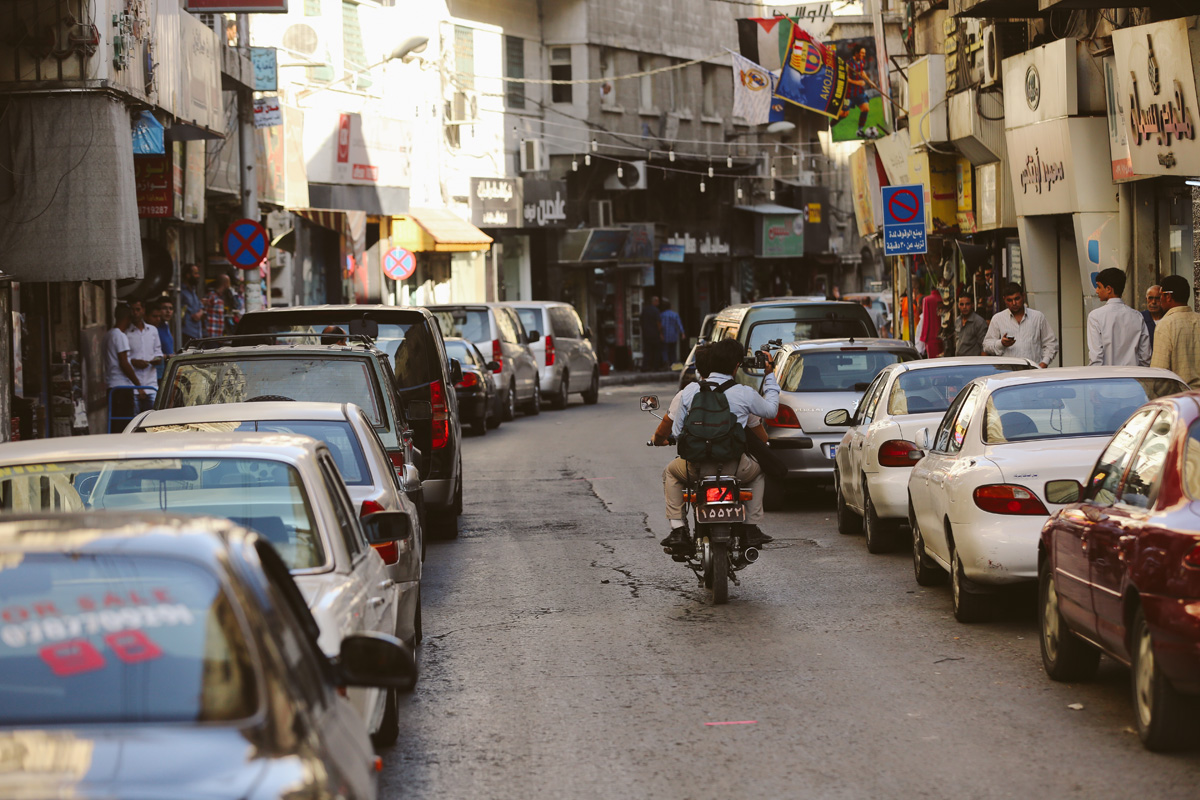 Another moment keyed from real footage is when Bernal’s character video-records a young protestor being shot as he climbs the fence of a government building. “Maziar’s footage of this event showed smoke from a burning car, so we needed to be very specific and add the element of smoke on our location.” Bukowski states. “Jon put me right in the middle of this jostling crowd, and it’s the most subjective camerawork in the film. It really conveys what Maziar went through, minus the real danger, of course.” Putting Bukowski in the midst of the chaos, Stewart says, created a “breadth and scope that didn’t exist with the amount of extras we had.”
Another moment keyed from real footage is when Bernal’s character video-records a young protestor being shot as he climbs the fence of a government building. “Maziar’s footage of this event showed smoke from a burning car, so we needed to be very specific and add the element of smoke on our location.” Bukowski states. “Jon put me right in the middle of this jostling crowd, and it’s the most subjective camerawork in the film. It really conveys what Maziar went through, minus the real danger, of course.” Putting Bukowski in the midst of the chaos, Stewart says, created a “breadth and scope that didn’t exist with the amount of extras we had.”
Occasionally, real life became too intrusive, forcing Stewart, on one occasion, to halt production. “We needed to recreate another spontaneous demonstration in the low-income Tehran neighborhood of Robat Karim,” the director explains. “So we shot for two days in this former Palestinian refugee camp, which has, I would say, its own internal governance system,” he smiles. “On the evening of the second day some emotional issues broke out between our Jordanian crew and the locals that just became too volatile, and we all had to head for the roof and ‘take cover.’ We still got the scene, but from a different [i.e., safer] perspective than we had planned.”
Bukowski recalls that night of being typical of the constraints this type of moviemaking will encounter, particularly in a foreign location like the Middle East. “Jon was concerned that going down into the crowd [as planned] was going to turn into a dangerous situation,” he remembers. “I had put some lights on the streets and nearby buildings to light the actors, but I knew if we sent actors up to the roof, they would not be lit. It was pure documentary filmmaking. And I wasn’t going to stand in the way of that kind of storytelling. Fortunately, in the DI [with Tom Poole at Company 3 NY] I was able to extract some more exposure and it looked beautiful. It’s a hard lesson to learn in how not to over-light,” he smiles.
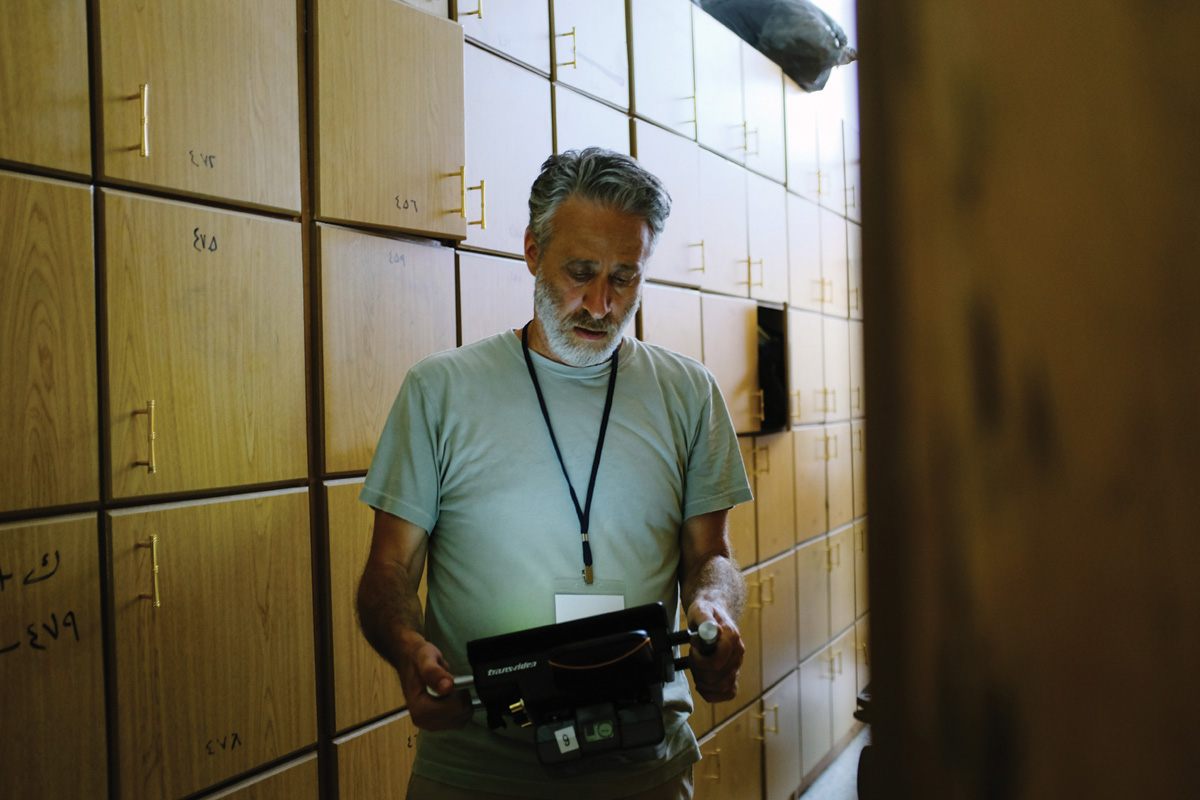 Critics have praised Rosewater for its cinematic restraint and humanistic storytelling, due in no small part to the collaborators who surrounded the first-time filmmaker. “Having never done this before, I had no conception of how difficult it would really be,” Stewart laughs. “But Bobby, Gerry, Will and everybody did know. And I think because they were so tested, it perhaps gave them more of a sense of ownership. I’ve been [with The Daily Show] for 16 years, and we have sanded away every rough edge of production. But out there, making [Rosewater] was a completely different experience. I never would have made it without those guys.”
Critics have praised Rosewater for its cinematic restraint and humanistic storytelling, due in no small part to the collaborators who surrounded the first-time filmmaker. “Having never done this before, I had no conception of how difficult it would really be,” Stewart laughs. “But Bobby, Gerry, Will and everybody did know. And I think because they were so tested, it perhaps gave them more of a sense of ownership. I’ve been [with The Daily Show] for 16 years, and we have sanded away every rough edge of production. But out there, making [Rosewater] was a completely different experience. I never would have made it without those guys.”
by David Geffner / Photos courtesy of Open Road Films
